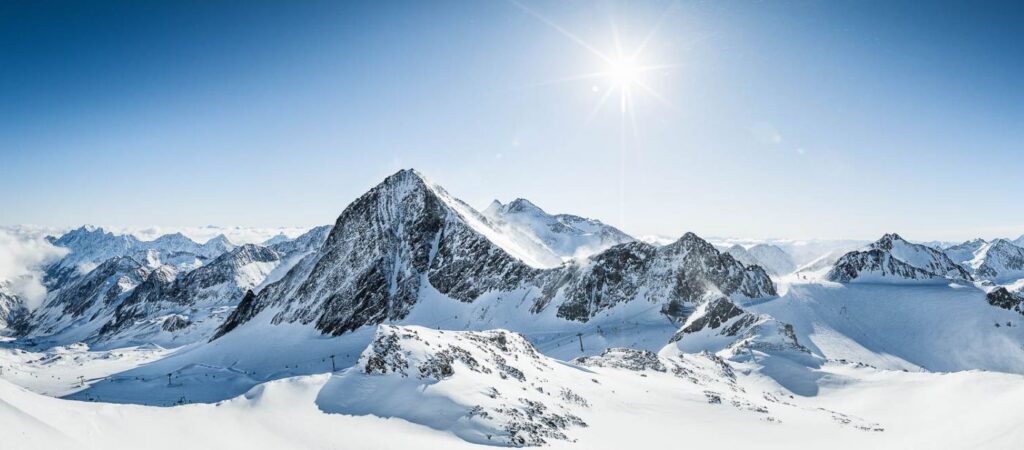
Cozying up in a warm fleece blanket after a day on the slopes is a lovely feeling; cozying the slopes themselves up in a fleece blanket, as it turns out, can also be an excellent way to keep snow and ice from melting high in the Swiss Alps.
While making something cozy under a blanket isn’t exactly how one would first think to keep something cold, it’s protecting Switzerland’s vulnerable glaciers from the summer sun by reflecting the rays away like ultra-white paint.
The 3,238-meter (10,623-ft) Mount Titlis has seen large portions of its glacial coverage disappear over the last few decades, and ski resort employees who rely on the glaciers to keep the snow thick and crisp for winter holidays work for 4-6 weeks securing blankets to give the ice rivers all the help they can get.
After the worst of the heat has passed, they spend another 4-6 weeks peeling the blankets off again.
MORE: New Power Plant Turns Waste into Energy—and Doubles as a Ski Slope and Climbing Wall
The polyester fleece blanket coverage on Titlis now extends 100,000 square meters, or roughly the same size as 14 football fields. This allows snow patches to keep the ice underneath cool year-round, and be deployed to barer slopes once winter returns.
The snow is even used to reinforce the piles of the ski lifts that are drilled into the ice, but which need the snow to support them.
RELATED: Engineer Creates Green Oasis by Growing Glaciers in the Desert
Known as “white gold,” the Swiss winter tourism market is worth $5.65 billion annually. The blankets are a bit makeshift, but ski resorts depend on the glaciers, and preserving them helps preserve, as John Muir pointed out, the entire mountain ecosystem.
(WATCH the Reuters video about this story below.)
PREVENT A Good News Freeze—Share This Story…




















